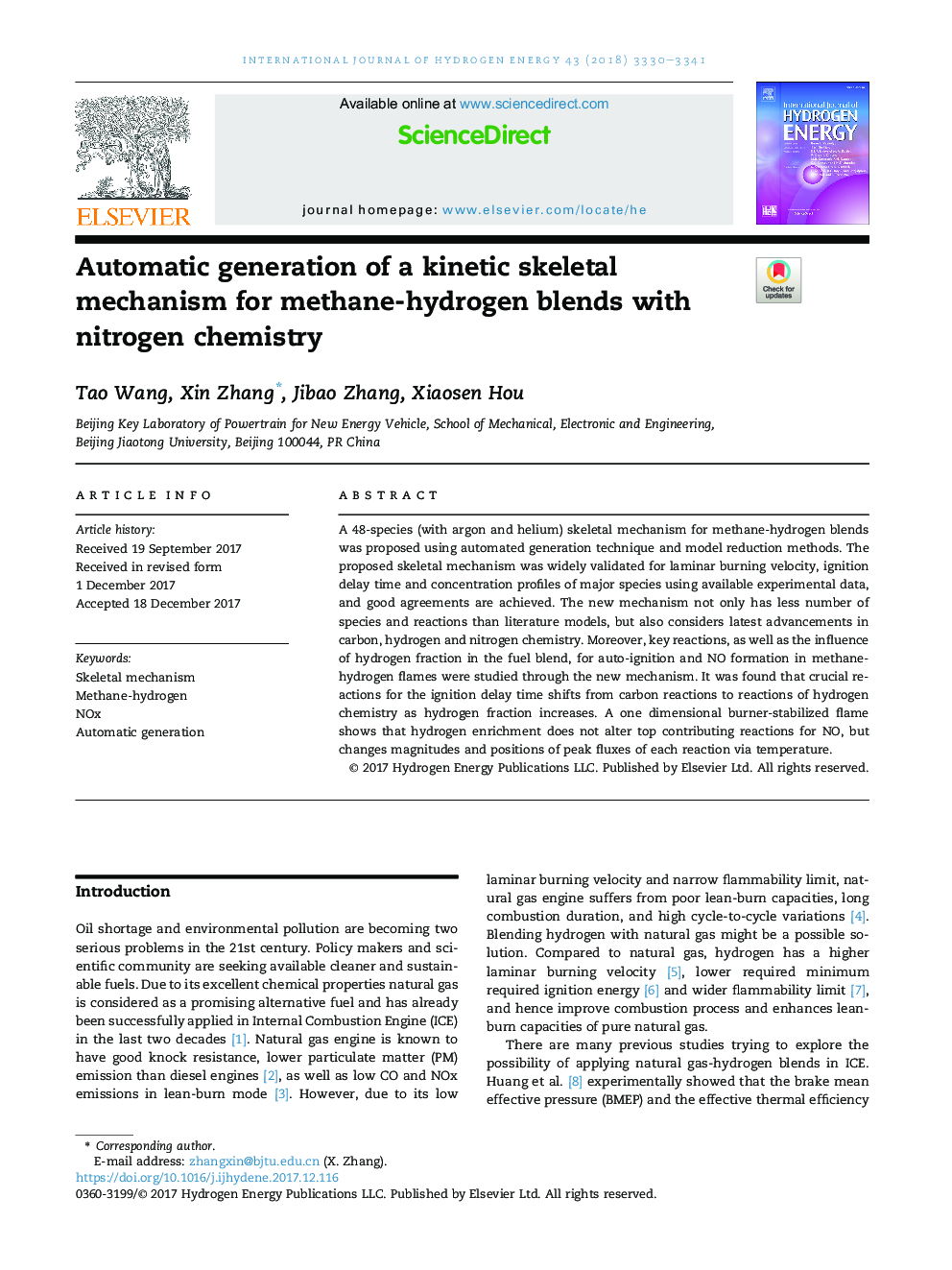| Article ID | Journal | Published Year | Pages | File Type |
|---|---|---|---|---|
| 7707812 | International Journal of Hydrogen Energy | 2018 | 12 Pages |
Abstract
A 48-species (with argon and helium) skeletal mechanism for methane-hydrogen blends was proposed using automated generation technique and model reduction methods. The proposed skeletal mechanism was widely validated for laminar burning velocity, ignition delay time and concentration profiles of major species using available experimental data, and good agreements are achieved. The new mechanism not only has less number of species and reactions than literature models, but also considers latest advancements in carbon, hydrogen and nitrogen chemistry. Moreover, key reactions, as well as the influence of hydrogen fraction in the fuel blend, for auto-ignition and NO formation in methane-hydrogen flames were studied through the new mechanism. It was found that crucial reactions for the ignition delay time shifts from carbon reactions to reactions of hydrogen chemistry as hydrogen fraction increases. A one dimensional burner-stabilized flame shows that hydrogen enrichment does not alter top contributing reactions for NO, but changes magnitudes and positions of peak fluxes of each reaction via temperature.
Related Topics
Physical Sciences and Engineering
Chemistry
Electrochemistry
Authors
Tao Wang, Xin Zhang, Jibao Zhang, Xiaosen Hou,
